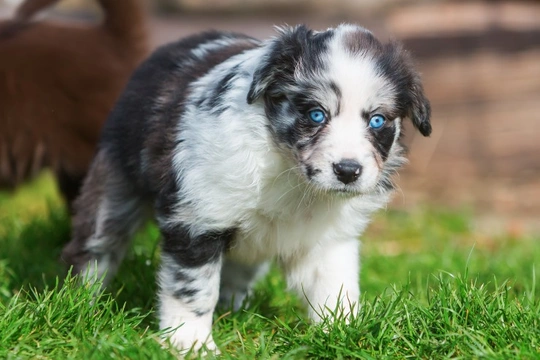
When Do Puppies' Eyes Change Color? Find Out Now
Puppies are born effectively blind with their eyes sealed shut, which means that your pup won’t begin to see and you won’t get your first glimpse of their eyes until they are a couple of weeks old, when their eyes begin to open for the first time. When you do see your pup’s eyes for the first time, they will almost certainly be blue-with the exception of albino dogs, whose eyes appear white, pink or red.
However, blue eyes in adult dogs are not very common, aside from within certain breeds like the Siberian husky-and the eventual eye colour that your pup will display changes gradually over time, until their eyes become established in their permanent adult colour.
If you have ever wondered when a pup’s eyes will change colour and you will be able to see what colour their eyes will be as an adult-and why puppies are born with blue eyes in the first place-read on to get the answers to all of your questions.
Why are all puppies blue eyed?
The bright and distinctive blue shade of a young pup’s eyes is unlikely to be their final adult eye colour, because eyes within the brown spectrum are much more common in most breeds of dog one they reach adulthood. This brown colour (and other variants such as hazel, amber and even green) are caused by the presence of melanin, which adds tone and shade to the iris of the eyes.
Blue is not an eye colour in and of itself-it is an absence of colour, and the blue shade that you see is the result of light reflecting and refracting within the eye. Melanin only begins to develop in the iris as dogs get older, and it is this melanin that produces the colour pigmentation that you will see in adult dogs whose eyes are a colour other than blue.
The notable exception to this is dogs with albinism, whose eyes will appear to be either pink, white or red. White eyes are caused by the effect of lighting, while red or pink eyes are displaying and reflecting the blood-rich capillaries in the eyes, which are masked by the colour caused by melanin in non-albino dogs.
Why are pups born blue eyed?
All puppies are born with blue eyes, because blue is the appearance that the reflection and refraction of light on the iris produces when there is no melanin present in the eyes. Because melanin production in the eyes does not begin until the pups are a few weeks old, their eyes appear blue until this point.
The amount of melanin produced by an area of the eye’s iris called the stroma dictates the eventual eye colour-the darker brown the eyes, the more melanin the eyes produce, whils lower amounts of melanin cause amber, green or other lighter variants. Little to no melanin production in the eyes results in blue eyes even in adult dogs.
When do the eyes change colour?
Puppies begin to open their eyes at around the age of two weeks, but it takes several more weeks for their eyesight to fully mature and give them their full range of adult vision, and the melanin production within the eyes that leads to the adult eye colour develops simultaneously with this.
Your blue-eyed pup will not suddenly wake up one morning with brown eyes-the process is gradual, and you will be able to follow the change if you look at your pup’s eyes every day! The eye colour begins to change (if it is going to) by the time the puppy is three to four weeks old, at which point you may begin to see the first traces of flecks of brown or other colours, and the development of a ring of colour around the inner and outer edges of the iris.
This colour gradually develops to give the dog their adult eye colour by the time the dog is around four months old, although the process can happen rather faster for some dogs.
Not all dogs have a uniform eye colour either-some dogs with blue eyes may have a noticeable fleck or stripe of brown in their eyes, or even an eye that is half and half-and of course, some dogs are odd-eyed, with one blue eye and one of another colour!
By the time your dog is around four months old, the colour that their eyes are is likely to be their adult colour, and the eyes are unlikely to change significantly after this time.
However, changes in the eye colour of mature and adult dogs can indicate that something is going on with your dog’s eyes that warrants investigation, such as if the eyes begin to appear cloudy, pale, or otherwise change in colour or general appearance.
It is a good idea to get to know the normal appearance of your dog’s eyes and perhaps take a picture of them when they are around a year old, so that you can monitor for changes and potential problems that may arise as they get older.



